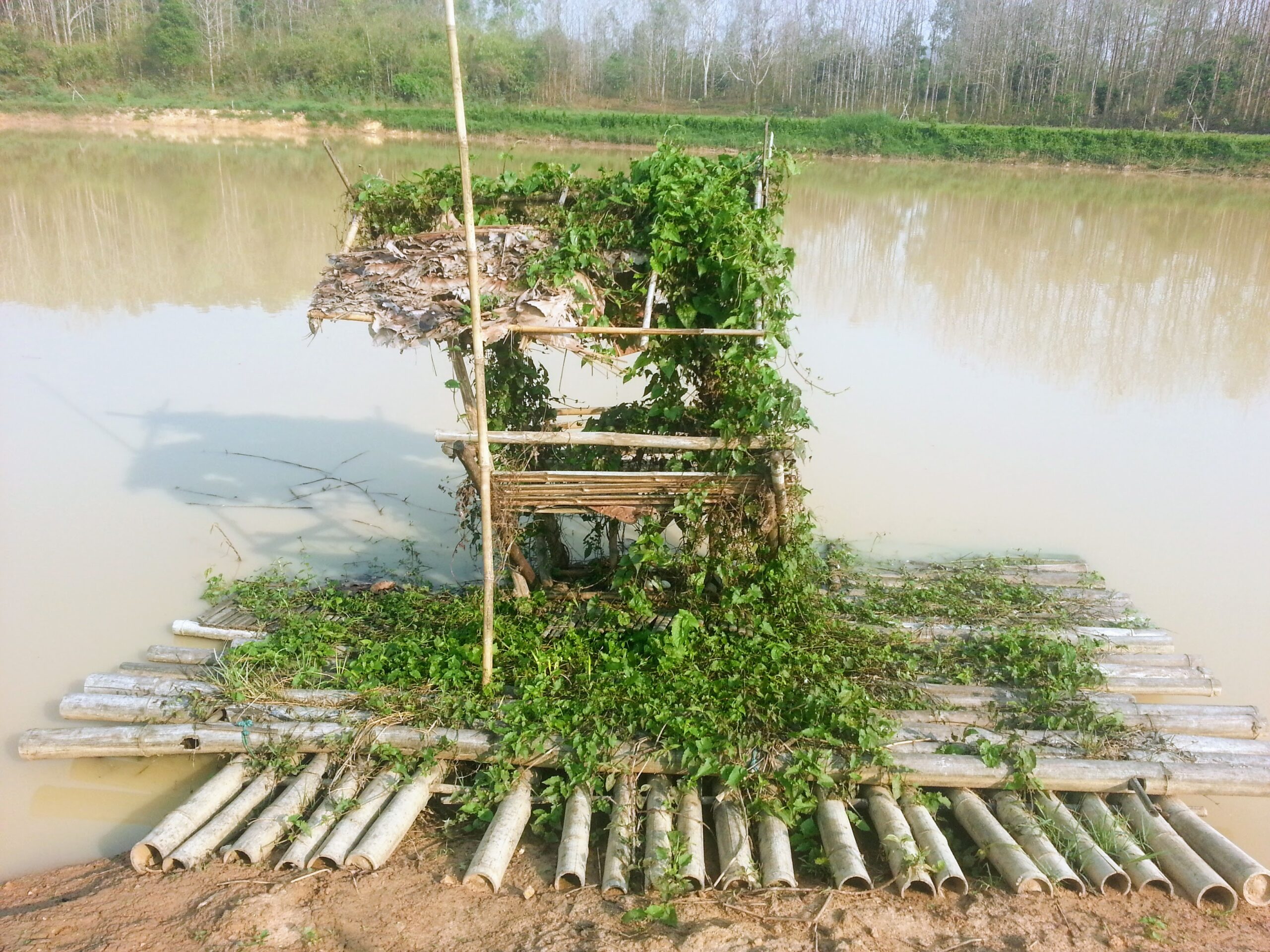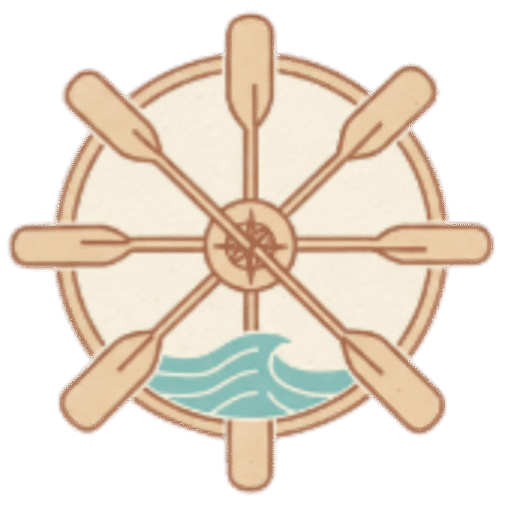
About RAFT to freedom – our voyage to liberation
Embarking on the journey to freedom from our human struggles is a profound act of courage. The ‘RAFT to Freedom’ programme, based on the powerful RAFT framework, offers us a compassionate and comprehensive guide, blending ancient Buddhist wisdom with insights from modern neuroscience, psychology, and philosophy.
It’s more than just a programme; it’s a blueprint to help us navigate the challenging waters and subtle currents of our shared destructive cravings, aversions and compulsions and move towards the ‘safe shore’ of freedom and genuine well-being.
We do not need to identify with an addiction or compulsion, nor as a Buddhist, to benefit from this programme. All that’s required is an open and compassionately curious mind. After all, it could be said that “we are all addicted to something!” We can all get caught in cravings and compulsive patterns of thinking and behaviour that lead to suffering.
Gotama (the Buddha) often spoke of our human experience, entangled in wanting and confusion, as a ‘dangerous shore’, fraught with risk and suffering. This may resonate with your experience – that feeling of being caught in currents of craving, tossed by waves of difficult emotions, and stranded far from genuine peace. But he also spoke with certainty of a ‘safe shore’ – the possibility of liberation, a state of freedom, characterized by peace, clarity, and profound well-being.
The RAFT to Freedom programme is about navigating the vast expanse between these two shores. How do we make this crossing from danger to safety – from ‘dis-ease’ to wellness? Gotama suggested we build a raft – a vessel constructed skillfully from the materials available to us.
What is RAFT?
R – Recognise: Our journey begins with an honest look at our current situation. This means truly seeing and understanding the nature of our ‘present-moment-experience’, which naturally includes our pain, difficulties, and disappointments. These inherent difficulties of life are compounded and amplified by our innate cravings, aversions and compulsions. It’s about mindfully surveying the ‘dangerous shore’, acknowledging that our patterns of escape and self-sabotage hold us captive. As Gotama said:“We are enslaved by craving.”
Grounding ourselves in generosity and ethical commitment, we explore our embodied experience of what it is to be human, resolving to cast off what binds us. While at the same time, actively gathering the raw materials that will help us find liberation.
We learn to identify and dis-identify from the ‘addictive voice’ or the personification of compulsion itself – calmly saying, “I see you, Māra.”
Through cultivating the Four Resolutions, we guard against picking up new bad habits, letting go of old ones, while at the same time cultivating more wholesome and healthy habits. This involves embodying a new wholesome way of being in the world.
We assess our inner potential by exploring the ‘Four Superpowers’ (noble desire, courageous energy, heart’s compass and fearless investigation). It’s at this stage of our journey that we cultivate the heart practice of self-compassion, an appropriate response to being human – to the difficult and painful situations that we often find ourselves in.
A – Abandon: Once we’ve recognised the landscape, the next crucial step is to abandon the primary source of our suffering – our harmful cravings, compulsions and damaging behaviours – that have kept us ‘stuck’ on the ‘dangerous shore’. This involves an exploration of how we experience ourselves and the world as pleasant, unpleasant or neutral. We learn to cultivate powerful inner strengths, known as the ‘Five Defenders’ (confidence, courage, mindfulness, a gathered mind, and discernment) helping us cast aside crippling impulses and behaviours.
It is appropriate here to cultivate the heart practice of self-love – befriending ourselves while building the confidence to abandon our old unhelpful cravings and patterns of behaviour – to set a new trajectory, a new path.
F – Freedom: Having lightened the heavy burden of craving and compulsion, we can now actively turn towards our new destination: the direct experience of freedom. This stage is about learning to notice, appreciate, and stabilise moments of peace, non-craving, and clarity – to linger and savour.
We learn to identify and skilfully navigate the whirlpool of thoughts – the dangerous courses on our quest to freedom (sensual desire, ill will, sloth and torpor, restlessness and remorse, and debilitating doubt). Not only freedom from these ‘Five Hindrances’ but also the freedom to glimpse and experience their absence – the ‘far shore’. Understanding these common mental obstacles helps us to steer our raft safely.
As an antidote to the hindrances, we intentionally cultivate the ‘Seven Navigational Skills’ (Factors of Awakening), which serve as clear indicators to us that our mind is moving towards liberation.
Appropriately, it’s in this leg of our journey that we begin to cultivate the heart-practice of self-joy, appreciating both the inner and outer moments of peace and clarity.
T – Train: Our final stage is a commitment to diligently train our body, heart, and mind using what Gotama described as the ‘Middle Way’ – navigating between the extremes of sense pleasure and self-harm. This ‘Middle Way’ involves engaging with the timeless instructions of Gotama’s ‘Eightfold Path’, which acts as both our instruction manual and navigational map, integrating wisdom, ethical conduct, and mental discipline into our daily lives. We explore how clinging to our self-identity can block us on our journey.
It’s in this final stage of our journey we cultivate resilience and self-balance. This consistent practice guides us to the ‘safe shore’ of lasting freedom.

About: What is the RAFT to Freedom?
An AI generated introduction to the RAFT programme.
Building our raft for the journey
To help us visualise this journey, our ‘raft’ is built from several key components:
- Operator: We are the captain, navigator, and crew, skillfully managing our vessel and voyage.
- Foundational planks: Our commitment to ethical conduct, starting with generosity and the ‘Five Gifts’, ensures we have a solid base of harmlessness.
- Binding ropes: The appropriate responses or ‘Brahma Viharas’ (compassion, kindness, joy, and equanimity) that are applied inwardly as self-compassion, self-kindness, self-appreciation, and self-balance, providing us with resilience and heart.
- Sails: The four stages of our journey, (Recognise, Abandon, Freedom, Train) help to catch the wholesome and helpful winds, speeding our direction towards liberation.
- Four anchors: The ‘Four Foundations of Mindfulness’ are the four anchors that steady our raft.
- Compass points: The ‘Four Resolves’ (prevent, abandon, cultivate, and maintain) direct our effort with great precision.
- Power source and engine: The ‘Four Superpowers’ (noble desire, courageous effort, the heart’s compass, and fearless investigation) provide us with the motivation, energy, focus, and intelligence we need for the journey.
- Tools and reinforcements: The ‘Five Defenders’ (confidence, courage, mindfulness, a gathered mind, and discernment) are our faculties and strengths for navigating life’s challenges.
- Operating manual and navigational map: The fourth ‘Foundation of Mindfulness’ – Mindfulness of Principles and Processes offers us a more detailed understanding and reminds us of the tools needed to reach our destination.
Together, we explore a wide range of tools, skills, perspectives, attitudes, and actions that are recognised as valuable in contemporary models of promoting health and well-being. This integrated approach draws upon ancient Buddhist teachings, complemented, where helpful, by insights from neuroscience, psychology, and philosophy. The RAFT to Freedom programme integrates the latest insights from:
- Neuroscience: Understanding the brain’s role in habit formation and how new neural pathways can be forged.
- Psychology: Applying principles of cognitive behavioral therapy (CBT), acceptance and commitment therapy (ACT), and positive psychology to support behavioral change.
- Philosophy: Drawing on ethical frameworks and wisdom traditions that complement the Buddhist teachings, providing a holistic view of human flourishing.
| RAFT Component | Core Principle | Buddhist Foundation (Gotama’s Realisations) | Key Modern Scientific & Psychological Parallels |
| R – Recognise | Recognise pain and dissatisfaction. | The reality of dukkha (suffering/unsatisfactoriness). | Hedonic Treadmill, Negativity Bias, Evolutionary Mismatch. |
| A – Abandon | Abandon harmful cravings and reactivity. | The origin of dukkha is craving (taṇhā). | Dopamine Reward System Hijacking, Neuroplasticity, ACT, DBT, MBRP. |
| F – Freedom | Familiarise with moments of non-craving. | The cessation of dukkha is possible (nirodha). | Positive Psychology (Flourishing), Neuroplasticity (Rewiring for Calm). |
| T – Train | Train the mind and body via a structured path. | The path to the cessation of dukkha (magga). | Behaviour Change Models (e.g., SMART Recovery), Askesis (Philosophical Training). |
This comprehensive approach ensures that we are equipped with both the ancient wisdom and modern scientific understanding needed to achieve lasting freedom and well-being.
The RAFT to Freedom offers a practical, relatable, and deeply empowering path, inviting us to trust in our capacity to learn, grow, and heal, and to embark on a profound act of courage and self-care.
Both Cathryn and Vince acknowledge with gratitude the inspiration drawn from Stephen Batchelor’s work, particularly his Cartography of Care.
The RAFT to Freedom programme is freely offered with open hands and open hearts, as Cathryn and Vince’s practice of generosity. If you would like to contribute towards the running costs of RAFT to Freedom, please email contact@raft2freedom.
Want to know more?
Email us at contact@raft2freedom.org